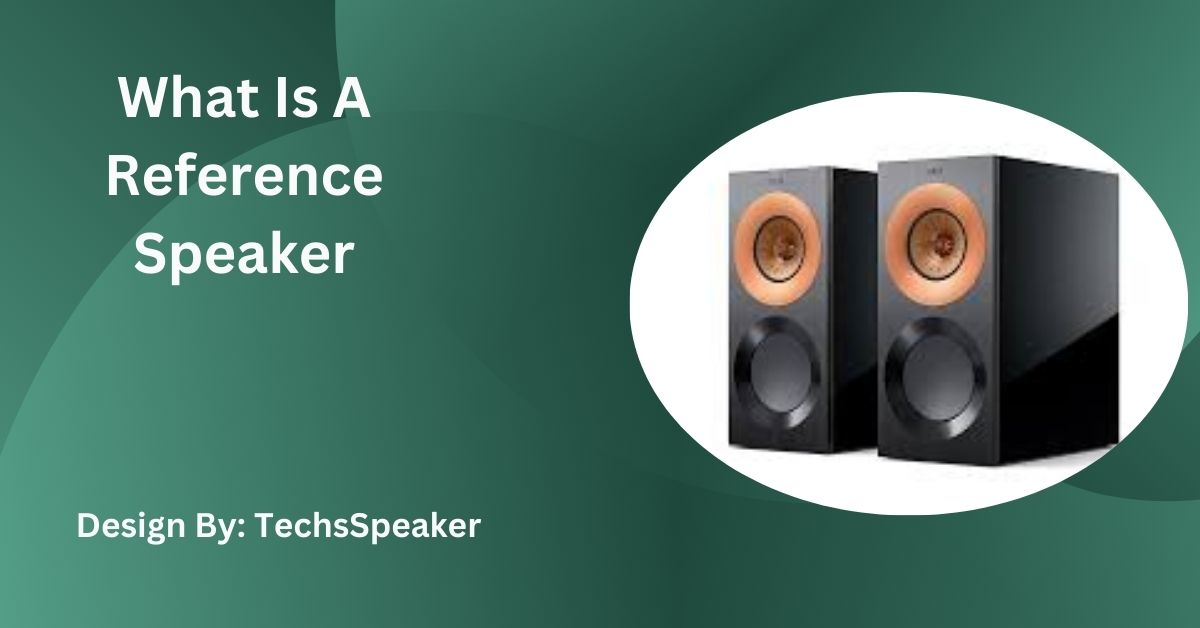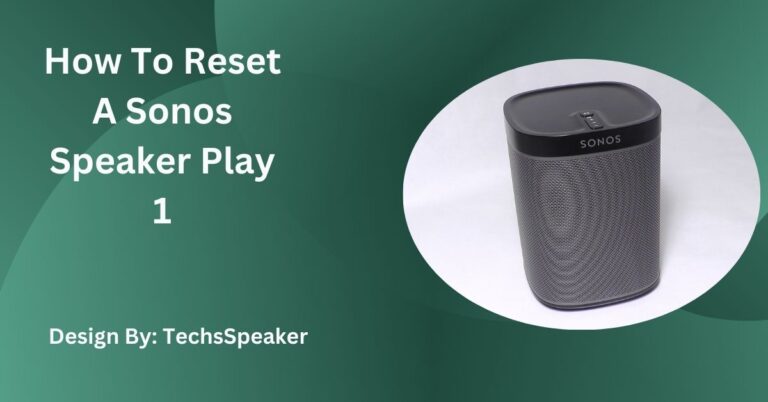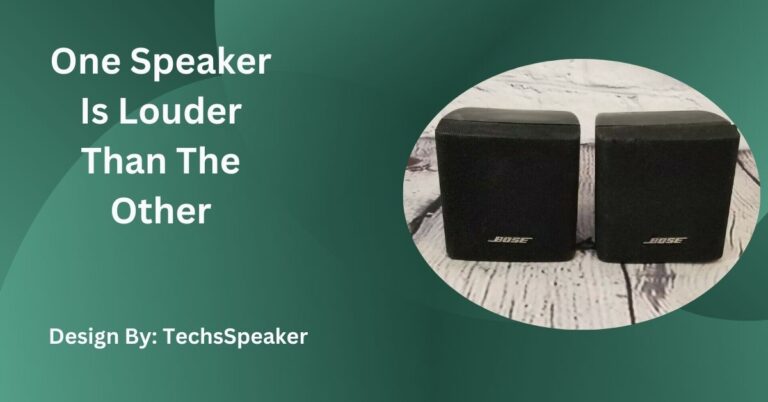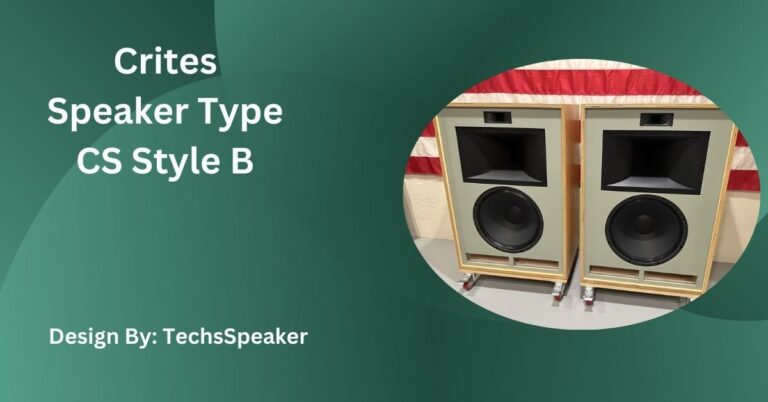What Is A Reference Speaker – A Comprehensive Guide!
A reference speaker provides accurate, uncolored sound reproduction essential for mixing and mastering music, ensuring the final product sounds great on all playback systems.
Introduction:
When diving into the world of audio production, the term “reference speaker” frequently comes up. But what exactly is a reference speaker, and why is it crucial for anyone serious about music production? This article delves into the intricacies of reference speakers, their importance, and how they compare to other audio equipment like headphones and earbuds.
What is a Reference Monitor Speaker?
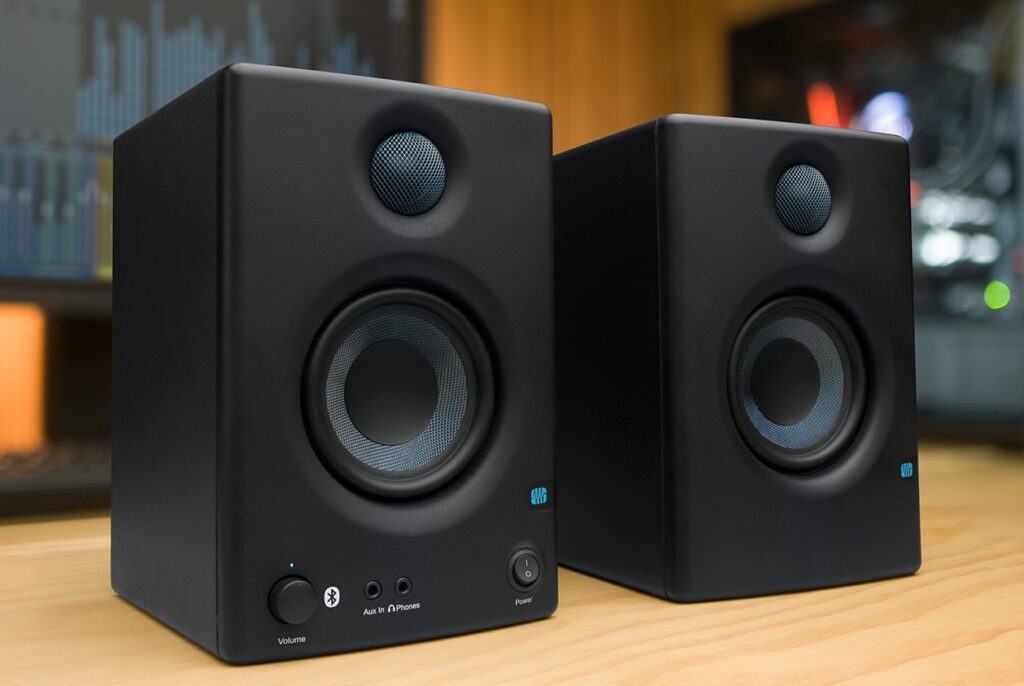
A reference monitor speaker, also known simply as a reference speaker, is a type of speaker designed to deliver a flat frequency response, meaning it reproduces sound without coloring or altering the audio. This accuracy is essential for mixing and mastering music, as it allows producers to hear the music exactly as it is, ensuring that the final product sounds great on all playback systems.
What Are Reference Speakers and Headphones?
Reference speakers and headphones share the common goal of providing accurate sound reproduction. While reference speakers are used in studios to play audio out loud, reference headphones offer a similar level of precision but in a personal, quiet setting. Both tools are indispensable for audio professionals, but they serve different purposes depending on the environment and requirements of the task at hand.
What Size of Speaker to Buy for Music Production?
Choosing the right size for reference speakers depends on your studio space and the type of music production you’re engaged in. Smaller speakers, such as 5-inch monitors, are suitable for smaller rooms and near-field listening.
Larger monitors, such as 8-inch speakers, provide a greater depth of sound and are better suited for larger spaces. It’s important to match the speaker size to your studio environment to avoid issues like bass buildup or insufficient sound coverage.
Also Read: What Is The Best Gauge For Speaker Wire – 12 AWG vs. 14 AWG vs. 16 AWG!
Reference Monitors vs. Headphones vs. Earbuds:
Understanding the differences between reference monitors, headphones, and earbuds is crucial for selecting the right tool for your audio work. Reference monitors are ideal for accurate sound reproduction in a controlled studio environment. Headphones provide a private and detailed listening experience, which is useful for identifying minute details.
Earbuds, while convenient for casual listening, generally lack the accuracy needed for professional audio work. Each has its place, but for mixing and mastering, reference monitors and headphones are the go-to choices.
Understanding Reference Speakers – Key Features and Benefits!
Reference speakers are designed with several key features that set them apart from regular speakers. These features include:
- Flat Frequency Response: Ensures no part of the audio spectrum is exaggerated or diminished.
- High-Quality Drivers: Provide accurate and detailed sound reproduction.
- Robust Build Quality: Reduces unwanted vibrations and distortion.
- Active vs. Passive: Active monitors have built-in amplifiers, while passive ones require external amps.
The primary benefit of reference speakers is their ability to reveal the true nature of your audio, allowing for precise adjustments and a final mix that translates well across all listening systems.
Will More Expensive Speakers Make You Mix Better?
Investing in high-quality reference speakers can indeed enhance your ability to mix better, but it’s not a guaranteed fix. More expensive speakers generally offer better build quality, more accurate sound reproduction, and greater durability.
However, the key to great mixing lies in understanding your speakers, your room acoustics, and developing your critical listening skills. Expensive speakers are a tool, but the skill and experience of the audio engineer are what ultimately determine the quality of a mix.
How to Connect Reference Monitor Speakers to Computers?
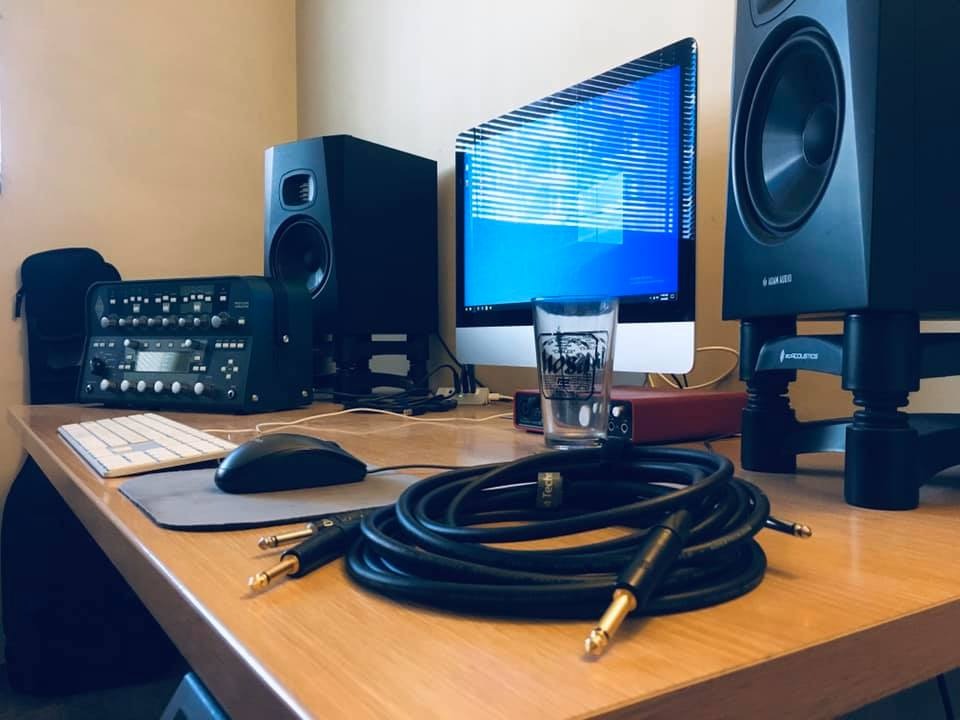
Connecting reference monitor speakers to your computer involves a few straightforward steps:
- Audio Interface: Use an audio interface to convert your computer’s digital signal to an analog signal that the speakers can use.
- Cables: Connect your speakers to the audio interface using balanced cables (XLR or TRS) for the best sound quality.
- Power: Ensure your speakers are powered, either via an external power source (for active monitors) or through an amplifier (for passive monitors).
- Positioning: Place your speakers at ear level and at an equal distance from your listening position to create an equilateral triangle for optimal sound imaging.
Top Characteristics of High-Quality Reference Speakers:
High-quality reference speakers are distinguished by several characteristics:
- Accuracy: They provide a true representation of the audio without coloration.
- Detail: Capable of revealing subtle nuances and details in the mix.
- Consistency: Maintain performance across different volumes and listening environments.
- Build Quality: Robust construction that minimizes unwanted resonance and distortion.
- Adaptability: Features such as room correction and adjustable settings to suit various studio environments.
FAQ’s:
1. What is a reference monitor speaker?
A reference monitor speaker delivers a flat frequency response, providing uncolored sound reproduction for accurate audio mixing and mastering.
2. Why are reference speakers important for music production?
They ensure accurate sound reproduction, allowing producers to hear the true mix, leading to a final product that sounds great on various playback systems.
3. How do reference speakers differ from regular speakers?
Reference speakers offer a flat frequency response and high-quality drivers, ensuring precise audio reproduction without coloration or distortion.
4. What’s the difference between reference speakers and headphones?
Reference speakers are used in studios for loud audio playback, while reference headphones offer precise sound in a personal, quiet setting.
5. What size reference speakers should I buy?
Choose smaller speakers for small rooms and near-field listening, and larger speakers for greater sound depth in bigger spaces.
6. How do reference monitors compare to headphones and earbuds?
Reference monitors provide accurate sound in studios, headphones offer detailed private listening, and earbuds lack the precision needed for professional audio work.
7. Do expensive reference speakers improve mixing quality?
While they offer better build and sound quality, great mixing also depends on understanding your speakers, room acoustics, and critical listening skills.
8. How do you connect reference monitor speakers to a computer?
Use an audio interface to convert digital to analog signals, connect with balanced cables, power the speakers, and position them correctly for optimal sound imaging.
9. What are key features of high-quality reference speakers?
They include flat frequency response, high-quality drivers, robust build quality, and adaptability features like room correction and adjustable settings.
Conclusion:
Reference speakers are essential for accurate audio production, providing uncolored sound reproduction crucial for mixing and mastering. Understanding their features, proper setup, and the role they play compared to headphones and earbuds ensures a professional and high-quality final audio product. Investing in good reference speakers, paired with critical listening skills and room acoustics understanding, can significantly enhance your music production results.

